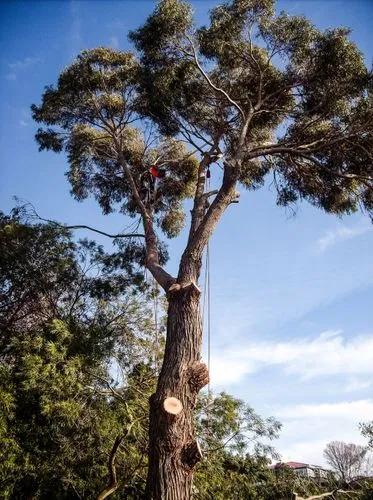Pinus ponderosa, commonly known as the ponderosa pine, bull pine, blackjack pine, western yellow-pine, or filipinus pine is a very large pine tree species of variable habitat native to mountainous regions of western North America. It is the most widely distributed pine species in North America.
Stone pines have been used and cultivated for their edible pine nuts since prehistoric times. They are widespread in horticultural cultivation as ornamental trees, planted in gardens and parks around the world. In coastal California, for example, where known popularly as the Italian stone pine in tree guidebooks since 1956, this evergreen is widely grown from Hollywood to Palisades Park (Santa Monica), to Sylmar in the northern San Fernando Valley, and in Marina del Rey, after World War II. This plant has gained the Royal Horticultural Society's Award of Garden Merit.
Pinus ponderosa is a large coniferous pine (evergreen) tree. The bark helps to distinguish it from other species. Mature to over-mature individuals have yellow to orange-red bark in broad to very broad plates with black crevices. Younger trees have blackish-brown bark, referred to as "blackjacks" by early loggers. Ponderosa pine's five subspecies, as classified by some botanists, can be identified by their characteristically bright-green needles (contrasting with blue-green needles that distinguish Jeffrey pine).
The Pacific subspecies has the longest—7.8 in (19.8 cm)—and most flexible needles in plume-like fascicles of three. The Columbia ponderosa pine has long—4.7–8.1 in (12.0–20.5 cm)—and relatively flexible needles in fascicles of three. The Rocky Mountains subspecies has shorter—3.6–5.7 in (9.2–14.4 cm)—and stout needles growing in scopulate (bushy, tuft-like) fascicles of two or three. The southwestern subspecies has 4.4–7.8 in (11.2–19.8 cm), stout needles in fascicles of three (averaging 2.7–3.5 in (69–89 mm)).
The central High Plains subspecies is characterized by the fewest needles (1.4 per whorl, on average); stout, upright branches at narrow angles from the trunk; and long green needles—5.8–7.0 in (14.8–17.9 cm)—extending farthest along the branch, resembling a fox tail. Needles are widest, stoutest, and fewest (averaging 2.2–2.8 in (56–71 mm)) for the species.










